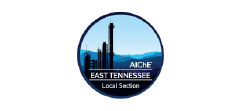TRACK 8 – Your Digital Journey
Click on seminar title below to read the abstract
Alex Pfalzgraf, Senior Digitalization Consultant & Jose Roberto Manzano, Head of Process Automation Software North America, Siemens
Companies of all types and from all industries are increasing their productivity with digital technologies. With the right tools, they have the ability to increase efficiency, security, and productivity. They can achieve this by taking a holistic view of existing strategies and identifying smaller, more manageable process optimization opportunities of the existing installed base. In doing this, they need to leverage technologies such as artificial intelligence, smart monitoring, and data analytics. But how do you tackle such a challenge from a change management perspective? How do you get the people onboard? It is relatively easy to talk about the need for digital transformation at a high level, but when it comes to planning and executing the strategy to create a company-specific roadmap, it tends to be more challenging. More than that, it overwhelms people in the organization who are already overloaded with keeping the plant running. What can be the strategies to support the change internally and get the buy-in from the team? How to ensure that digital transformation will not be a one-off average project but rather a continuous adaption built into your company’s culture?
What attendees will learn
- Hear about findings from multiple years of digital transformation projects in the chemical industry
- Discuss challenges, change management, and company culture related to digital transformation projects; include experience from the audience
- View of simulated business cases to dive deeper into the basic understanding of how to identify relevant digital transformation projects
- Discuss considerations and ideas that motivate teams to change, strategies that have proven to be successful, and how they can be implemented
Suhas Hajgude, Technical Consultant & Dan O’Brian Technical Consultant, Honeywell
Asset performance management is not just about predictive maintenance and analytics for equipment. Customers can use insights from their APM solution to optimize overall operational sustainability and meet carbon reduction goals. APM can now monitor and help control energy usage and emissions. Hear more along with a supporting offshore case study. In 2-3 years, companies will begin to realize the cost savings and competitive advantages of advanced energy efficiency and emissions management strategies. Successful companies will take advantage of an enterprise-view of emissions and energy consumption, real-time energy and emission models, mass and heat balance calculations, thermodynamic libraries, fugitive emissions monitoring, and emissions reduction measures tied to actionable insights.
To achieve advanced sustainability strategies, businesses can implement a solution in two steps using a modular asset performance management solution. Beginning with modular solutions for health and optimization, and then applying tools for outcome-based energy and emissions strategies can help facilities with the journey through 4 levels of APM maturity on the path to net-zero emissions. Examples illustrate how petrochemical, refinery and chemical plants can reduce energy intensity through target setting, measuring, gap identification, and implementation. Learn more about how to reduce carbon emissions, improve energy efficiency, reduce maintenance cost, and increase equipment uptime.
What attendees will learn
- Honeywell Forge Asset Performance Management is designed to help aggregate data from assets and processes, making the data analyzable to uncover potential failures, provide recommendations on how to solve those hiccups, allowing the opportunity to bring assets and processes back to their established operational states faster.
- Asset Performance provides enterprise scalability, accelerated time to value, a vendor agnostic platform for third-party integration, fully managed services, and early detection enabling proactive steps before likely failure without over-maintaining equipment.
Keith Chambers,VP for Manufacturing Solutions, & Reena Bayley, Senior Industry Marketing Manager, AVEVA
In this session, we will explore how digital technologies can transform chemical manufacturing to create a connected future. We will discuss this digital transformation in 3 areas:
- Creating an agnostic and resilient industrial data fabric
- Aligning this with your operating model including the use of AI tools for optimization, prediction and recommendations
- Scaling the benefits across your Eco-system.
Join us to learn how AVEVA’s model driven approach to Smart Manufacturing for the chemical industry can harness the power of connectivity to drive growth and innovation
What attendees will learn:
- What is a Smart Factory for chemical manufacturing, Foundations of an industrial data fabric for chemical manufacturing
- How that fabric support the operating model of the plant in the short and long intervals (daily operations and CI)
- The role of AI in the smart factory
- How a model drive approach facilitates scaling the benefits across factories, the supply chain and the broader Eco-system
Kyle Frogge, Sales Executive, Dimension Software
This presentation covers how cutting-edge software applications can seamlessly align alarm management and process safety as applicable within the chemical industry. Focused on the challenges faced by modern industrial operations, we explore the transformative potential of optimizing safety protocols and operational efficiency. By integrating alarm systems with process safety mechanisms, the system enables real-time monitoring, early anomaly detection, and automated notifications to mitigate potential hazards. Using scenarios and practical applications, we will demonstrate how disparate safety elements can be visualized and analyzed together in context, thereby enhancing risk assessment, incident prevention, and overall operational resilience. We will also touch on its user-friendly interface, customization capabilities, and scalability, making it adaptable to diverse chemical processes. Additionally, we will delve into the analytics and reporting features that empower decision makers with valuable insights for continuous improvement. The presentation aims to provide industry professionals with a comprehensive understanding of how a software application can revolutionize safety practices, creating a cohesive and responsive environment that elevates the overall safety culture within chemical facilities. Viewers will gain practical insights into the tangible benefits of alarm management and process safety, fostering a safer and more efficient future for the chemical industry.
What attendees will learn
- Tangible benefits of alarm management and process safety
- How integrating alarm systems mitigate potential hazards
- How disparate safety elements can be visualized and analyzed together in context to enhance risk assessment, incident prevention, and overall operational resilience
- How a software application can revolutionize safety practices to create a cohesive and responsive environment
- The system’s capabilities in analytics, reporting, customization, and scalability
Don Mack, Industry Manager, Siemens
“Digitalization and Sustainability are two of the most popular buzz words in use today. If we’re going to use them, let’s do so in a pragmatic way. The question we’re addressing is “How can digital technologies be leveraged to help companies in the process industries meet their sustainability goals?”
In this presentation we will look at several use cases, including some real-life examples, that delve into the application of Industry 4.0 technology to produce chemicals in a more resilient and responsible way.
Areas addressed will include:
- Carbon footprint reduction
- Energy efficiency
- Recycling
Attend this presentation for a better understanding of where the sustainably created rubber meets the digitalized road to the future!” “How digital technologies can be leveraged to achieve sustainability goals
What attendees will learn:
- Why this is important
- Potential use cases to consider for their own plants
- Where this approach is already being implemented
- How to get started
Aaron Pittenger, Group Manager, Business & Industrial IT, RoviSys
Join us while we explore the evolution of manufacturing control systems and see how the digitally integrated systems of today are more vulnerable to cybersecurity threats than ever. We will then transition into a discussion around steps chemical manufacturers can take to defend themselves against these bad actors and challenges they are likely to encounter along the way.
What attendees will learn:
- Evolution of control systems
- Security levels within a manufacturing network/ server infrastructure
- Challenges to deploying a cyber-resilient infrastructure within the chemical manufacturing arena
- Sample architecture for a ‘generic’ chemical plant
- Digital Transformation Strategies
Aaron Severa, Product Manager, Pepperl+Fuchs
A thin client architecture is a network computing model where most processing and data storage is centralized on a server, while thin client devices are used as remote terminals which are often located in control rooms or in the process area. A thin client architecture offers a number of user-benefits, including reduced costs, increased longevity, improved security, and simplified management allowing a plant to get the best value for their investment.
What attendees will learn:
- What a thin client is
- How they differ from traditional PCs and KVM installations
- The benefits that thin clients can offer to a user, control engineer and IT
- What types of hardware platforms can be utilized with thin clients
- How to fully manage, both locally, and remotely, a thin client architecture”
Dr. Erik Volerink, CEO and Founder, Trackonomy Systems
The Internet of Things is becoming more and more prevalent throughout industrial and consumer applications. Consequently, the sensors have become capable of sending messages regarding their environment. The sensor now can contain lots of computing power, taking the computing to where it needs to be. Systems need both scalability and flexibility across business units and geographical sites. Central subject matter expertise can now be leveraged with remote engineers supporting multiple locations. Sensors now sense each other and work together to support business rules.
In this seminar, real-world projects will be discussed, showing the value of smart objects and their ability to communicate at the lowest level. These will include healthcare, logistics, border protection and asset reliability.
What attendees will learn
Takeaways from this session:
- Wider understanding of sensors and their capabilities
- Animating objects to produce autonomous intervention
Mark Thompson, Commercial Solutions Leader, Johnson Controls
Optimization of central plants can help solve many critical business challenges including labor shortages, facility disruptions and sustainability. New optimization strategies and predictive software can cut energy use, greenhouse gas emissions and operational costs, while increasing reliability and occupant comfort.
What attendees will learn
- Why central plant optimization is so important and how it can help solve critical business challenges, including labor shortages, facility disruptions and sustainability
- How to begin the central energy plant optimization journey for both design/new construction and retrofits
- Best practices for control sequence design, instrumentation, fault detection, diagnostics and automated system optimization software solutions
- How innovative model-based optimization software uses predictive algorithms to cut energy use, harmful greenhouse gas emissions and operational costs, while increasing reliability and occupant comfort



